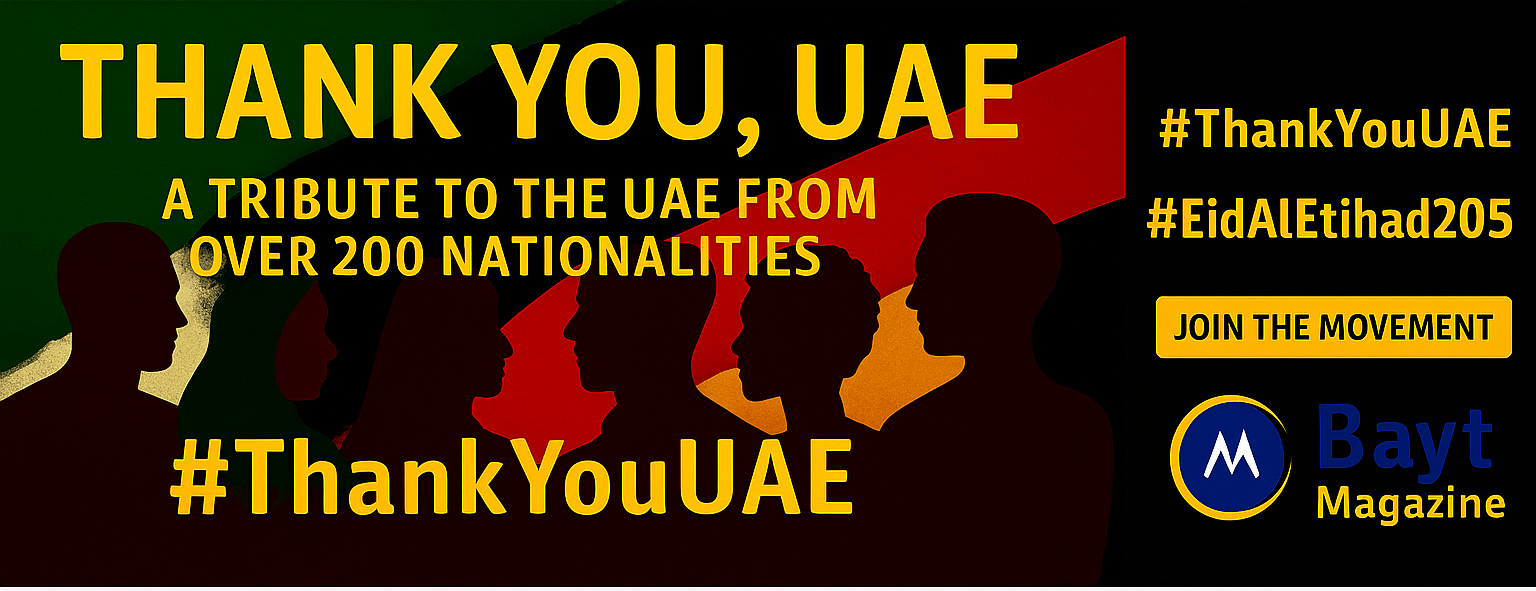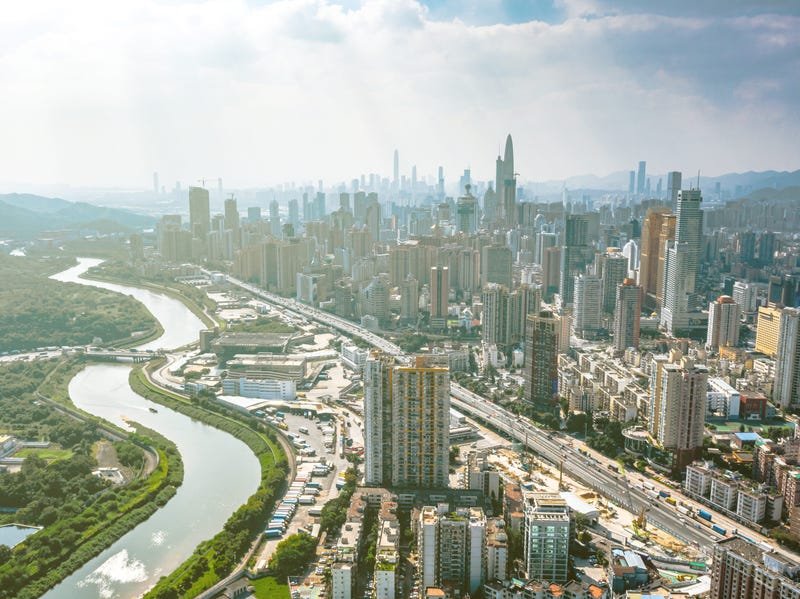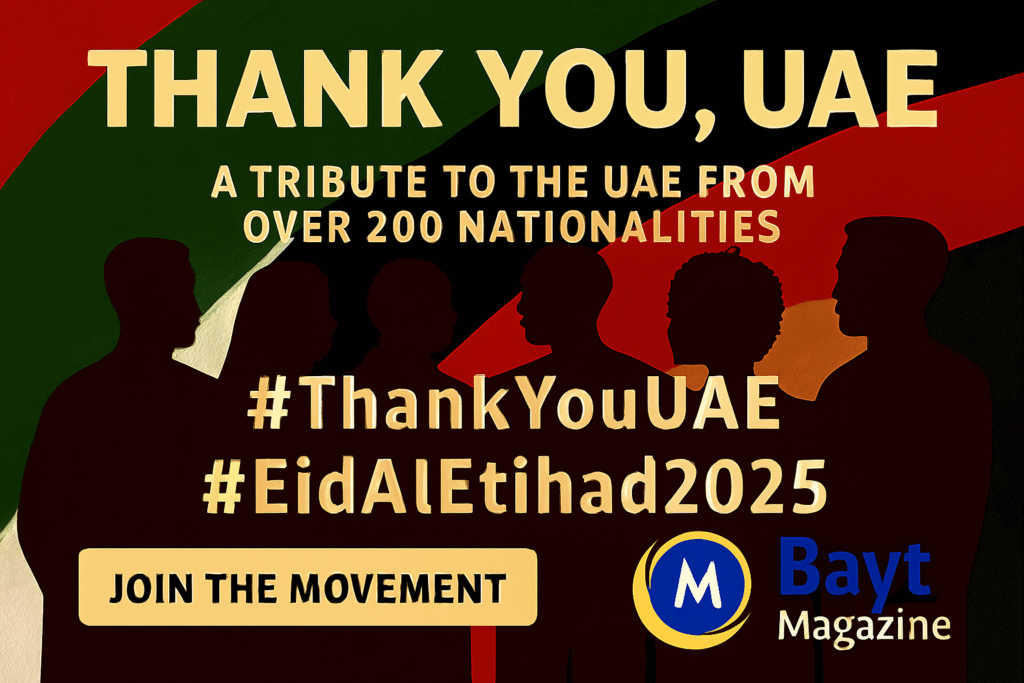Billionaires worldwide have grown to 3,028 in 2025. Ten metropolitan areas across six countries now house nearly a quarter of these ultra-wealthy people.
New York leads this elite group with 123 billionaires who control $759 billion in wealth. Moscow follows with 90 billionaires, and Hong Kong claims third place with 72. The United States remains the dominant force with 902 billionaires nationwide.
Global billionaire wealth has reached $16.1 trillion, jumping $2 trillion from last year. These wealthy individuals live in 78 countries, yet the top ten cities alone control $3.3 trillion. This concentration shows how financial power clusters heavily in major urban areas.
New York City: The Undisputed Billionaire Capital of the World

Image Source: Bloomberg
New York City remains the world’s billionaire capital for the fourth straight year. The Big Apple is home to 123 billionaires who together own AED 2787.00 billion. This wealth puts the city at the top of the global wealth map.
New York’s Financial Ecosystem and Billionaire Growth
The city’s billionaire count grew by 13 from last year. Fifteen newcomers joined this exclusive group. The city’s strong financial foundation draws wealth from across the globe. The wealth density here is striking – one in every 24 New Yorkers has a net worth of at least seven figures.
New York’s wealth extends well beyond just billionaires. The city has 744 centimillionaires (people worth over AED 367.19 million) and about 350,000 millionaires. These numbers show its unique position in wealth creation.
Wall Street’s Influence on Wealth Creation
Wall Street powers New York’s wealth engine. The city hosts the world’s largest stock exchanges—the New York Stock Exchange and Nasdaq. These exchanges shape both local and global economic patterns.
The financial sector does more than just handle trades. Wall Street creates a “wealth effect.” Rising markets boost people’s confidence and spending, which makes up almost 70% of the U.S. economy. The equity markets help businesses grow, buy assets, and create jobs.
Notable New York Billionaires and Their Industries
The city’s billionaires come mainly from three sectors: 68 built their wealth in finance and investment, 13 in real estate, and 12 in fashion and retail. These numbers reflect what makes New York’s economy tick.
Michael Bloomberg leads the pack. His financial data company has earned him AED 385.55 billion. Julia Koch follows with AED 272.46 billion from her 42% stake in Koch Industries. Other big names include private equity giant Stephen Schwarzman, trading wizard Jim Simons, and cosmetics mogul Leonard Lauder.
Real Estate and Luxury Living for the Ultra-Wealthy
New York offers a unique luxury living experience for the super-rich. “Billionaires’ Row” along 57th Street near Central Park features some of the world’s tallest homes. These buildings command sky-high prices. A quadplex penthouse at 111 W. 57th Street hit the market for AED 403.91 million, making it the city’s priciest home listing.
The ultra-luxury market thrived in 2025 despite slower overall real estate sales. Contracts for homes above AED 14.69 million topped AED 40.39 billion—up 8.5% from the previous year. Luxury condominiums now ask a record AED 11,015.82 per square foot. These numbers cement New York’s place as the playground for the world’s wealthiest.
Moscow: Russia’s Surprising Billionaire Stronghold

Image Source: WSJ
Moscow ranks second among The Cities With The Most Billionaires 2025, home to 90 ultra-wealthy residents who own AED 1501.82 billion combined. The city added 16 billionaires last year—more than any other global city—and 11 of these were first-time members of this exclusive club.
Oil Oligarchs and Resource-Based Wealth
Russia’s natural resources are worth AED 275.40 trillion and serve as the foundations of Moscow’s billionaire class. The country owns 32% of global gas reserves, stands second in oil production, and leads in iron, gold, and timber reserves.
Vagit Alekperov tops Moscow’s wealth list with AED 105.38 billion, mostly from his Lukoil stake. Other powerful resource magnates include:
- Vladimir Potanin runs Norilsk Nickel, the world’s largest nickel producer
- Leonid Mikhelson of natural gas producer Novatek saw his wealth grow by AED 21.30 billion to AED 100.61 billion
- Mikhail Fridman’s Alpha Consortium grew from commodities trading to telecom, banking, and oil
These fortunes started in the 1990s when state assets sold for “pennies on the dollar” during post-Soviet chaos. High commodity prices have since boosted these fortunes, and Russian billionaires added AED 264.38 billion to their wealth last year.
Political Connections and Wealth in Moscow
Business success and political relationships go hand in hand in Moscow. Vladimir Putin made things clear to oligarchs after taking power in 2000: they could keep their wealth if they stayed away from politics.
Many Moscow billionaires thrived under this deal. Research shows that “businesspeople with informal connections to the federal executive increased their fortunes much faster compared with everyone else”. Studies reveal that 43% of Russian companies had political connections through ownership or directorship by 2015.
The city works almost like a “semiautonomous political-economic entity”. City officials control huge money flows through unclear budget processes that help connected elites.
Lifestyle of Moscow’s Elite
Moscow’s billionaires live large, especially in the Rublevka district—what people call the “Beverly Hills of Moscow”. Their Moscow homes might cost just AED 25.70 million, but real luxury lies elsewhere.
These oligarchs own custom yachts (starting at AED 146.88 million) and Gulfstream private jets (AED 121.17 million). Their global property collection includes London’s Belgravia or Eaton Square homes (AED 91.80 million), French Riviera villas (AED 91.80-257.04 million), and Alpine chalets.
Moscow’s billionaire count keeps growing despite Western sanctions. This growth shows how resource-based wealth and political connections stay strong in one of the world’s top billionaire cities.
Hong Kong: Gateway to Asian Wealth

Image Source: Wealth-X
Hong Kong ranks as the world’s third-largest hub of billionaires in 2025. The city houses 72 ultra-wealthy individuals whose combined fortune showcases its role as Asia’s premier wealth gateway. The collective net worth of Hong Kong’s 50 richest tycoons grew to AED 1105.25 billion from AED 1086.89 billion last year, despite modest economic growth of 2.5% in 2024.
Financial Services and Trading Empire
A strong financial sector powers Hong Kong’s billionaire ecosystem. This sector adds 24.9% to the territory’s GDP and provides jobs to over 269,100 people—7.3% of the working population. The city ranks among the world’s top four international finance centers, thanks to its strategic location, transparent regulations, and zero capital controls.
The city leads as the world’s largest offshore RMB business hub with the biggest pool of RMB liquidity outside mainland China. Banks in Hong Kong processed RMB5,376.3 billion in total RMB trade settlements during 2019. The city managed to keep its spot as the largest offshore RMB foreign exchange market, where the average daily turnover of RMB foreign exchange transactions grew by 39.6%.
Real Estate Moguls of Hong Kong
Real estate serves as the foundation of Hong Kong’s billionaire fortunes. Li Ka-shing tops the list with AED 136.96 billion. Lee Shau-kee, a real estate titan, holds second place with AED 107.22 billion. His latest project, The Henderson—a AED 12.12 billion, 36-story office tower—shows his lasting influence.
Henry Cheng and his family command a fortune of AED 71.60 billion, ranking third through New World Development despite recent challenges. His children Adrian and Sonia have grown the family’s portfolio in commercial real estate and luxury hotels.
Luxury in Hong Kong reaches extraordinary levels. Lee Shau-kee’s family mansion on The Peak cost HKAED 6.68 billion (USAED 859.97 million) in 2010, setting a world record for the most expensive site then.
The Impact of Political Changes on Billionaire Population
Political changes have altered Hong Kong’s wealth map since 2020. The National Security Law and electoral reforms in 2021 reduced Hong Kong’s autonomy by a lot. The billionaire class showed remarkable resilience despite these changes affecting business confidence.
Wealth inequality has skyrocketed amid political uncertainty. The richest households now earn 81.9 times more than the poorest—more than double from 34.3 times in 2019. Hong Kong’s richest 0.001% control over half the city’s income, this is a big deal as it means that levels in Russia, the U.S., and China.
The authorities have stepped up their work to make Hong Kong a regional green finance hub. International green bond issuances reached USAED 295.59 billion by late 2022, opening new paths for wealth creation in The Cities With The Most Billionaires 2025.
London: Europe’s Premier Wealth Hub

Image Source: Savory Partners
London ranks fourth among The Cities With The Most Billionaires 2025. The city boasts between 35-97 billionaires according to various sources. Europe’s wealth capital houses 36 billionaires, which stands as the highest concentration across the continent.
Banking Legacy and Modern Finance
British pounds sterling financed more than half the world’s trade by the end of the 19th century. This rich heritage has evolved into a financial powerhouse that represents 15% of international bank lending. London’s financial services sector now drives half of its economic output and provides jobs to one-sixth of its workforce.
The UK capital stands as the nation’s most affluent city. Its total resident wealth amounts to AED 8.81 trillion, making it the fourth wealthiest city globally after New York, Tokyo, and San Francisco. The presence of 170 foreign banks in the Square Mile creates a unique concentration of financial institutions.
International Appeal and Tax Advantages
The city’s attraction to the ultra-wealthy comes from its 200-year-old non-dom tax regime. This system lets UK residents domiciled elsewhere avoid taxes on overseas earnings for up to 15 years. About 74,000 people benefited from this status in 2023.
Plans to end this colonial-era tax concession by April 2025 have sparked uncertainty. Research shows 63% of wealthy investors plan to leave the UK within two years if these changes take effect. Switzerland, Monaco, Italy, and Dubai actively court these individuals with attractive tax incentives.
London’s Luxury Property Market for Billionaires
Prime Central London’s property market reflects wealth concentration. Elite neighborhoods draw global billionaires consistently:
- Knightsbridge, Belgravia, Mayfair, Kensington, Westminster, Richmond, and Wimbledon rank among the capital’s wealthiest areas
- Mayfair demonstrates resilience with stable prices despite market fluctuations
The ultra-prime market shows notable shifts. Sales of homes valued above £15 million dropped from £829 million to £731 million in the first half of 2024 compared to 2023. American and Middle Eastern buyers lead the market now. They focus on pied-à-terre apartments rather than permanent residences.
Beijing: Political Power Meets Economic Might

Image Source: CNN
Beijing offers a compelling story in The Cities With The Most Billionaires 2025. The city’s economic power links directly with its political influence. The city once led global rankings with 100 billionaires but sits at fifth position now with 85 billionaires. Mumbai has moved ahead with 93.
Tech Giants and State Connections
Beijing’s tech companies face different rules than their Western rivals. President Xi Jinping’s leadership has brought the state and private businesses closer together. Major players like ByteDance, Didi Chuxing, and WeChat now actively seek Communist Party members. Didi plans to bring in 1,000 party members to boost its customer service.
These ties matter more than you might think. Chinese law makes businesses help intelligence agencies whenever they ask. Tech platforms also filter content to match government views. WeChat often shuts down accounts that talk about sensitive political subjects. This happened when a user posted information about tennis champion Peng Shuai.
Beijing’s Billionaire Industries
The city’s billionaires come from three main areas:
- Technology and software (making over CNY 3 trillion in output)
- Manufacturing and industrial products (growing 47% yearly over five years)
- Finance and real estate development
Grant Wang Ning stands out among Beijing’s wealthy elite. The Pop Mart toy maker saw his wealth jump 72% to USAED 14.32 billion. Manufacturing or technology ventures created wealth for half of China’s new billionaires.
Government Policies Affecting Wealth Creation and Retention
The “common prosperity” initiative has brought new rules to many sectors. The government has cracked down on private education, video gaming, entertainment, and how tech companies use algorithms. They put AED 2280.28 billion into research and development—slightly more than the U.S..
China has moved toward private ownership since 1978, yet the state owns more than Western countries do. New finance sector rules show this trend. Workers face penalties if they show off wealth or buy luxury items. These changes match President Xi’s bigger plan to shift China’s economy from free market capitalism to growth guided by the state.
Mumbai: India’s Financial Powerhouse

Image Source: Upstox
Mumbai has surpassed Beijing to become Asia’s billionaire capital with 92 billionaires. This achievement places India’s financial hub behind only New York (119) and London (97) in The Cities With The Most Billionaires 2025.
Family Dynasties and Industrial Conglomerates
Mukesh Ambani, Reliance Industries Chairman, leads Mumbai’s wealth rankings as Asia’s richest person with a fortune of AED 403.91 billion. Family businesses serve as India’s economic foundation and generate nearly 80% of the nation’s GDP. These businesses represent over 90% of its listed companies. The Ambani family leads India’s most valuable family businesses with Rs 25,75,100 crore. The Bajaj family follows with Rs 7,12,700 crore, and the Birla family ranks third with Rs 5,38,500 crore. Despite this wealth, seven major business dynasties face succession challenges. The Lodha, Kalyani, Modi, and Hinduja families are among those dealing with these disputes.
Emerging Tech Wealth in Mumbai
Tech-driven wealth creation thrives in Mumbai. About 86% of Indian CEOs now consider emerging technologies their key investment priority. The city buzzes with over 9,000 tech startups, many reaching unicorn status. State-of-the-art data centers, uninterrupted connectivity, and modern tech parks support Mumbai’s tech ecosystem. The manufacturing sector has accelerated India’s ultra-rich wealth growth at a 47% compound annual rate over five years. Mumbai’s role as India’s financial hub has helped create innovative solutions for banking and financial services.
Contrasts Between Old and New Money
South Mumbai sees a quiet transformation as 40-year residents sell their properties to newcomers who built their wealth in the past 10-15 years. Old money families struggle with succession planning and family obligations. New money focuses on creating wealth through business monetization and tax optimization. These groups differ in their approach to wealth building. Old money grew steadily through generations of hard work, often later in life. New money came quickly and at younger ages. Old money families prefer subtlety and avoid flashy displays of wealth through logos or expensive possessions.
Singapore: The Strategic Wealth Haven of Asia

Image Source: NDTV
Singapore ranks eighth among The Cities With The Most Billionaires 2025. The city-state’s strategic location in Southeast Asia has attracted 58 billionaires with a combined wealth of AED 534.38 billion. This shows remarkable progress from 2015 when the city had just 17 billionaires.
Tax Benefits and Financial Security
The ultra-wealthy find Singapore appealing because of its investor-friendly tax system. The city-state stands out from other financial hubs by offering:
- No capital gains tax
- No withholding taxes on dividend payments
- No estate, inheritance, or gift taxes
Singapore taxes on a territorial basis, which means residents don’t pay tax on foreign-sourced income. A corporate tax rate of 17% and tax treaties with over 90 countries make this place ideal for wealth preservation.
Global Headquarters and Business-Friendly Policies
The numbers tell a compelling story. Singapore has become the top choice for Asian headquarters, with 4,200 multinational regional headquarters in 2023. Hong Kong trails behind with 1,336. Tech giants like Microsoft, Google, and Rolls-Royce run major operations here.
This success stems from Singapore’s political neutrality, reliable regulatory frameworks, and talented workforce. The government actively supports regional hubs through targeted incentives. These efforts have paid off with about 700 family offices choosing Singapore by 2022, up from less than 100 just five years ago.
Quality of Life Factors Attracting the Ultra-Wealthy
The ultra-wealthy choose Singapore for three main reasons: political stability, excellent medical care, and outstanding education. The pandemic led many to rethink their priorities. Singapore emerged as the top destination for wealthy business owners looking to relocate.
The city-state leads globally in infrastructure quality, healthcare excellence, and educational standards. These strengths, along with Singapore’s reputation for safety, have made it a premier destination for wealth preservation.
Shanghai: China’s Commercial Center

Image Source: ResearchGate
Shanghai now ranks as the seventh most prominent city in The Cities With The Most Billionaires 2025. The city has overtaken Mumbai to become Asia’s billionaire capital with 92 ultra-wealthy individuals, a milestone achieved for the first time.
Manufacturing and Export Wealth
Shanghai became China’s leading industrial hub through a powerful mix of skilled workers, research facilities, producer cooperation, and reliable communication infrastructure. Manufacturing forms the backbone of the city’s economy, with Shanghai Baosteel Group growing into one of the world’s largest enterprises since the early 21st century.
The city’s manufacturing portfolio goes beyond steel to include machine tools, precision instruments, chemical production, and textiles. Heavy industry dominated until the late 1970s, but the city moved toward light industry to tackle pollution concerns and energy limitations. This smart decision has paid off well – Shanghai’s exported commodities now outperform imported goods in value.
Shanghai’s Tech and Innovation Ecosystem
Shanghai has transformed into a global science and technology powerhouse. The city invested about 4.4% of its GDP in research and development in 2024. Shanghai’s scientists published 158 papers in prestigious journals like Science, Nature, and Cell—making up 30% of China’s total publications.
The city hosts over 25,000 high-tech enterprises and welcomes more than 370 new science and technology companies each day. The Shanghai-Suzhou Cluster stands fifth among the world’s “Best Technology Clusters” according to the World Intellectual Property Organization.
The Rise of Consumer Brands and Retail Billionaires
Shanghai has established itself as a retail powerhouse. Total retail sales reached 1.85 trillion yuan (AED 936.12 billion) in 2023—jumping 12.5% from the previous year. The city has become China’s “debut economy” hub over the last three years, with more than 4,500 brands choosing to launch their products and services here.
Many international luxury brands, including Max Mara, have moved their headquarters from Beijing to Shanghai. They recognize the city’s business-friendly environment and commitment to sustainability. Shanghai-based companies utilize their rich cultural heritage to build globally competitive consumer brands.
San Francisco: Tech Innovation’s Billionaire Factory

Image Source: Wikipedia
San Francisco stands out among The Cities With The Most Billionaires 2025 with its remarkable density of wealth. The city has one billionaire for every 11,600 residents—the highest concentration worldwide.
Silicon Valley’s Wealth Creation Machine
The Bay Area creates wealth like no other place. San Francisco’s 63 billionaires outnumber New York’s 58. Tech has become the wealthiest industry on Forbes’ World’s Billionaires list, with a collective worth of AED 11.75 trillion. Tech moguls have grown richer than any other group in the last year, adding AED 2203.16 billion and 46 new billionaires.
The Bay Area’s richest include four billionaires who rank among the world’s top 50. Facebook founder Mark Zuckerberg (AED 228.76 billion), Oracle’s Larry Ellison (AED 229.50 billion), and Google co-founders Larry Page (AED 186.53 billion) and Sergey Brin (AED 182.86 billion) lead the pack.
Venture Capital and Startup Ecosystem
San Francisco’s billionaire factory thrives through its world-leading venture capital ecosystem. The city’s startups captured nearly one-fourth of all U.S. venture investments in 2024—the highest share since 2016. Venture capitalists poured more than AED 183.60 billion into San Francisco companies, showing a 43% jump from 2023.
AI and Emerging Technology Billionaires
Artificial intelligence drives this wealth explosion. San Francisco-based companies secured four of the top 10 biggest venture deals nationwide last year. Databricks (AED 36.72 billion) and OpenAI (AED 24.23 billion) led these investments. These companies, along with Anthropic, raised AED 90.33 billion in 2024 alone.
Lifestyle and Culture of Tech Elite
White busses with tinted windows carry tech elites across the city. They belong to exclusive social clubs like The Modernist, where members pay AED 11,015.82 yearly. Critics once said these groups created “a cossetted caste which lords it over everyone else”. Now, tech entrepreneurs build advocacy organizations to help solve city problems.
Los Angeles: Entertainment and Lifestyle Billionaires

Image Source: Curbed LA
Los Angeles has secured its spot as a top contender in The Cities With The Most Billionaires 2025. The city’s billionaire population grew faster than most global cities, and it now houses 53 billionaires. This remarkable growth added 19 new ultra-wealthy residents within a year.
Hollywood and Media Fortunes
The entertainment industry serves as the foundation of LA’s billionaire ecosystem. It pours tens of billions of dollars into the local economy each year and employs hundreds of thousands of people directly. The broader media scene creates about 586,000 direct and indirect jobs that generate over AED 157.89 billion in labor income. The entertainment sector’s annual output exceeds AED 440.63 billion, which makes up 8.4% of Los Angeles County’s estimated Gross County Product.
Celebrity Billionaires and Their Ventures
LA’s recent surge in celebrity billionaires has boosted its ranking among cities with the most billionaires. LeBron James stands out with AED 4.41 billion from his sports career, real estate, and business investments. Kim Kardashian’s wealth of AED 6.24 billion comes mainly from her shapewear and beauty brands. Rihanna joined the billionaire club with AED 5.14 billion thanks to her successful Fenty Beauty and Savage X Fenty brands.
Real Estate and Investment Portfolios
Real estate plays a crucial role in LA billionaires’ wealth-building strategies. The city’s property market stays strong despite rising interest rates and environmental challenges. Many of LA’s richest residents rely on property as their main income source. Developer Rick Caruso’s wealth grew by 2% to AED 21.66 billion, with his high-end retail properties performing three times better than industry standards. Ed Roski Jr. also saw his wealth jump by 13% through smart industrial real estate investments.
Shenzhen: The Emerging Tech Manufacturing Hub

Image Source: Business Insider
Shenzhen has grown faster than anyone imagined. This former fishing village now ranks as the world’s eleventh city with the most billionaires in 2025. The city houses more billionaires than any U.S. city. The technological powerhouse in southeastern China has seen its millionaire population surge by 140%. Today, 50,300 millionaires call Shenzhen home.
Hardware and Electronics Empire
We know Shenzhen as the “world’s factory.” The city produces 90% of the world’s electronics. Its nominal GDP reaches AED 1211.74 billion. Shenzhen’s manufacturing ecosystem covers everything needed to make electronics—from design to assembly—all under one roof. The city buzzes with tens of thousands of factories, 5,000 product integrators, and thousands of design houses. This makes Shenzhen a one-stop destination for anything with circuits, chips, and touchscreens.
From Factory Floor to Billionaire Boardrooms
Shenzhen creates more billionaires than any other Chinese city. Zhou Qunfei stands out as a perfect example. She started by making watch lenses for AED 3.67 a day. Now she runs Lens Technology, a multibillion-dollar operation. Without doubt, Tencent represents Shenzhen’s greatest achievement. The company started in 1998 and struggled to make profits. Today, it stands as China’s largest company with a market value of AED 1113.77 billion.
Government Support and Innovation Policies
Shenzhen’s government promotes innovation through several key initiatives:
- Entrepreneurs receive over AED 532.43 million in direct financial grants
- Nobel Prize-winning scientists lead 10 state-of-the-art laboratories
- The “Peacock Initiative” offers up to 100 million RMB for teams making scientific breakthroughs
This support has revolutionized Shenzhen’s reputation. The former “copycat” center now thrives as an innovation hub. Innovative businesses generate over 40% of economic output across internet, telecom, and biotech sectors. The city continues to grow through strategic investments in artificial intelligence, robotics, and humanoid technology.
Dubai: The Middle East’s Wealth Magnet

Image Source: Binance
Dubai ranks 11th globally among cities with the most billionaires in 2025. The emirate now houses 39 billionaires, with one more wealthy individual choosing Dubai as their home last year [163, 164].
Tax-Free Advantages and Business Incentives
The city draws wealthy individuals through its favorable tax policies. Residents pay no personal income tax, capital gains tax, or inheritance taxes. The UAE recently implemented a modest 9% corporate tax in 2023. This tax only applies to companies that earn profits above AED 375,000 (USD 102,000). The emirate’s free zones provide several benefits:
- 100% foreign ownership with zero import and export duties
- Companies can enjoy tax exemptions for up to 50 years in specific zones
- Simplified processes with reliable infrastructure
The 2019 Golden Visa initiative changed everything. It lets investors, entrepreneurs, and skilled professionals stay for 10 years without having to live there permanently.
Real Estate Development and Investment
Dubai’s property market stands among the world’s most dynamic. Property and plot sales show significant investment opportunities. A tax-free environment with no property or capital gains taxes helps investors maximize rental yields. Premium areas like Dubai Hills Estate, Dubai Creek Harbor, and Emaar Beachfront continue to offer strong returns despite global economic uncertainty.
Luxury Lifestyle and Strategic Location
The city represents luxury living at its finest. World-class shopping, exclusive wellness centers, and elite clubs create perfect networking opportunities. Dubai’s location at the intersection of Europe, Asia, and Africa makes it accessible to about two billion people within a four-hour flight. Several prominent billionaires call Dubai home. These include Lulu supermarket founder Yusuff Ali, Damac head Hussain Sajwani, Gems Education founder Sunny Varkey, and Telegram founder Pavel Durov. This blend of location advantages, tax benefits, and luxury amenities makes Dubai the Middle East’s leading destination for wealth.
Comparison Table
| City | Global Rank (2025) | Number of Billionaires | Combined Wealth | Primary Wealth Sources | Notable Features |
|---|---|---|---|---|---|
| New York | 1 | 123 | AED 2,787.00 billion | Finance (68), Real Estate (13), Fashion/Retail (12) | World’s largest stock exchanges; 744 centimillionaires |
| Moscow | 2 | 90 | AED 1,501.82 billion | Natural Resources, Oil, Banking | 16 new billionaires added last year; Strong ties to political sphere |
| Hong Kong | 3 | 72 | AED 1,105.25 billion | Financial Services, Real Estate, Trading | Leading offshore RMB business center; Financial sector contributes 24.9% to GDP |
| London | 4 | 36-97* | AED 8,810 billion (total resident wealth) | Banking, Financial Services | Home to 170 foreign banks; Non-dom tax system |
| Beijing | 5 | 85 | Not mentioned | Technology, Manufacturing, Finance | Close state-business relationships; Tech regulation center |
| Mumbai | 6 | 92 | Not mentioned | Family Businesses, Tech, Manufacturing | New Asian billionaire capital surpassing Beijing; Family businesses drive 80% GDP |
| Singapore | 8 | 58 | AED 534.38 billion | Financial Services, Global HQs | Tax-free capital gains; Houses 4,200 multinational regional offices |
| Shanghai | 7 | 92 | Not mentioned | Manufacturing, Tech, Retail | Houses 25,000 high-tech companies; Leading industrial center |
| San Francisco | Not mentioned | 63 | Not mentioned | Technology, Venture Capital | Highest concentration of billionaires (1 per 11,600 residents) |
| Los Angeles | Not mentioned | 53 | Not mentioned | Entertainment, Media, Real Estate | 19 billionaires joined the list last year |
| Shenzhen | 11 | Not mentioned | Not mentioned | Electronics Manufacturing, Technology | Makes 90% of global electronics |
| Dubai | 11 | 39 | Not mentioned | Real Estate, Trade, Technology | No personal income tax; Offers Golden Visa program |
The world’s billionaires cluster in major metropolitan centers, each city offering its own path to wealth creation and preservation. New York leads the pack with 123 ultra-wealthy residents. Cities like Mumbai and Shanghai are gaining ground quickly as they attract and nurture their own billionaire communities.
Each region has carved out its unique route to riches. New York and London leverage their 100-year old banking systems and market infrastructure. Hong Kong and Singapore’s success stems from their prime locations and pro-business policies. Moscow’s natural resources and Shenzhen’s manufacturing prowess show how specialized economic focus creates wealth clusters.
Local policies shape these wealth hubs in profound ways. Dubai draws global wealth with its zero-tax environment. Beijing guides wealth creation through careful state oversight. Singapore’s targeted incentives to family offices and regional headquarters have turned it into a magnet for the ultra-wealthy.
Technology has become a key driver of wealth across these cities. San Francisco boasts an incredible concentration of tech billionaires. Beijing’s digital economy giants and Shenzhen’s electronics ecosystem showcase technology’s impact on modern fortune-building. Traditional sectors like real estate and finance continue to create wealth, as seen in New York’s Wall Street leaders and Hong Kong’s property tycoons.
These twelve cities, though just a small slice of global urban centers, hold massive economic power. Their ongoing progress and rivalry to attract ultra-high-net-worth individuals will shape how global wealth flows in the years ahead.






